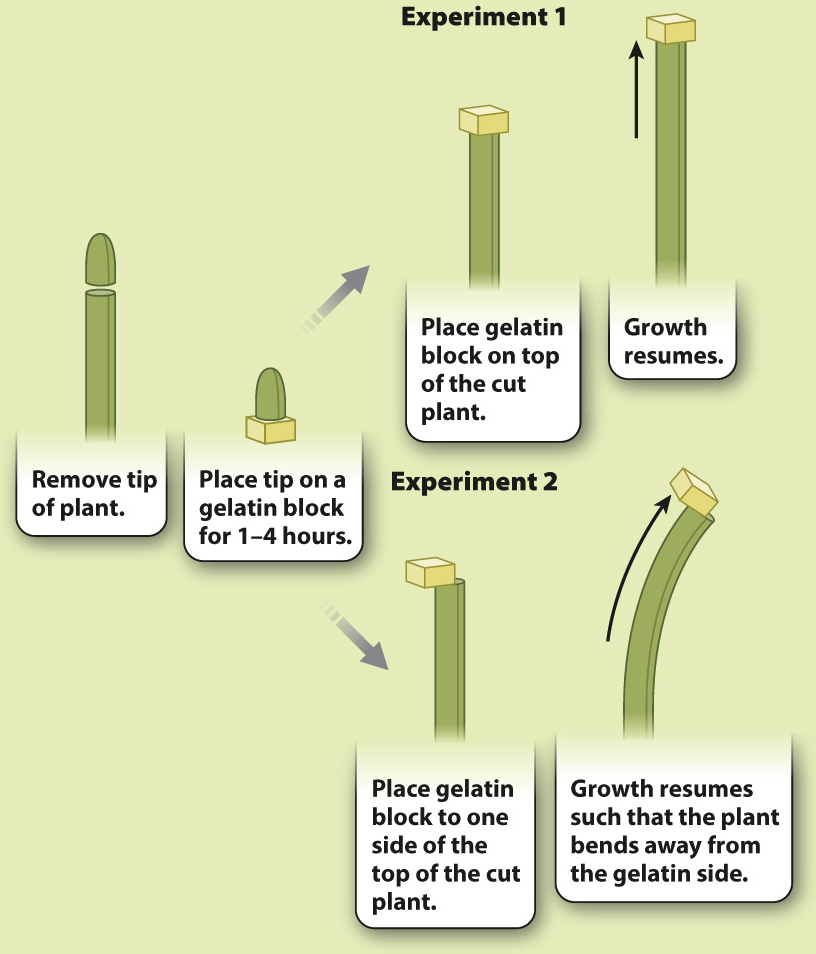HOW DO WE KNOW?
FIG. 31.19
How do plants grow toward light?
BACKGROUND In 1926, Frits Went, a Dutch graduate student, followed up on the experiments of Charles and Francis Darwin. In particular, Went sought to understand how the perception of light by the tip of the plant led to a growth response farther down the stem. He reasoned that if the signal from the shoot tip was a chemical, he could isolate it by cutting the tip off of a growing plant and putting it on a block of gelatin. The gelatin would act like a trap, capturing any chemical that moved out of the shoot tip.
HYPOTHESIS A chemical signal links the perception of light by the shoot tip with the growth of the stem toward light.
EXPERIMENT Went cut off the tips of young oat plants (Avena sativa) and placed them on gelatin blocks for periods of 1 to 4 hours. Removing the tip of the plant caused the plants to stop elongating. When the gelatin block was placed on top of the cut plant (Experiment 1), growth resumed. This experiment demonstrated that a growth-

Interestingly, Went found that if the block of gelatin was not centered on the tip but instead was a bit off center, the plant bent away from the side of the gelatin block (Experiment 2). In this case, the side of the plant exposed to the gelatin block grew faster, causing bending, because it received more of the chemical signal.
CONCLUSION A signal is produced in the tip of the plant and travels downward through the stem, toward the roots. This signal stimulates growth. Light causes the signal to move to the opposite side, stimulating growth on that side, which in turn causes the plant to bend toward the light. This signal is now known to be a plant hormone, called auxin from the Latin word augere, “to increase.”
FOLLOW-
SOURCES Darwin, C., and F. Darwin. 1880. The Power of Movement in Plants. London: John Murray; Went, F. W. 1926. “On Growth-